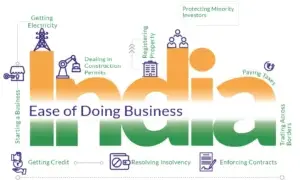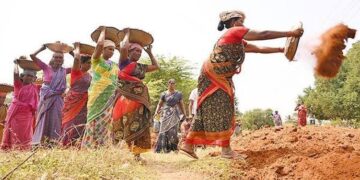India’s recent rise to the position of the world’s fourth largest economy has been hailed as a historic achievement. With a nominal GDP surpassing $4 trillion, India has leapfrogged past the United Kingdom and, more recently, Japan — once the undisputed symbol of Asia’s economic miracle. But beneath this glittering milestone lies a sobering question: Who truly benefits from this giant leap?
Overtaking Japan: A Mirage?
When India overtook Japan to claim the fourth spot, many saw it as a sign of India’s unstoppable ascent. But a closer look tells a different story. Japan, with a population of just 125 million, has a per capita income of over $33,000, while India’s per capita income is just around $2,700 — a stark gap that shows how average citizens actually live. Even when measured by Purchasing Power Parity (PPP), which adjusts for local cost of living, Japan’s per capita PPP income is still more than $49,000, while India’s is about $9,200.
Japan’s economy is driven by cutting-edge technology, world-class manufacturing, universal healthcare, and an ageing yet highly skilled workforce. India, meanwhile, remains one of the poorest among large economies when it comes to what truly touches people’s daily lives — income, nutrition, equality, and dignity.
What Makes Up the $4 Trillion?
So where does this $4 trillion GDP come from? According to the Government of India’s own estimates, about 53% of India’s GDP is driven by the services sector — IT, telecom, finance, trade, and real estate being major contributors. Industry, including manufacturing, mining, construction, and electricity, contributes roughly 25%, while agriculture — still the backbone of rural livelihoods — contributes just 15–16%, despite employing nearly half of India’s workforce.
This means India’s GDP headline is heavily propped up by urban services that benefit a small middle class and global corporations, while core sectors like farming and small-scale manufacturing — which employ the majority — contribute relatively little and remain underdeveloped. This imbalance makes growth look impressive in numbers but fragile in reality.
Numbers That Reveal the Truth
Behind the GDP cheerleading lies a darker reality:
India ranks 111th out of 125 countries on the Global Hunger Index (GHI) 2023 — worse than many poorer African nations.
Nearly 36% of Indian children are stunted (low height for age), and about 19% are wasted (low weight for height), according to the National Family Health Survey.
The top 1% of India’s population controls about 40% of the nation’s wealth, while the bottom 50% hold a meagre 3% — one of the worst inequality gaps among major economies.
India’s Gini coefficient, a standard measure of income inequality, has been rising steadily for two decades.
The Stark Figures Few Talk About
Look further, and more unsettling figures emerge. India’s unemployment rate has hovered around 7–8% in recent years — but youth unemployment is far worse, at nearly 45% for graduates under 25, among the highest in the world. Over 22% of Indians live below the national poverty line, according to government estimates — but independent studies argue the real number is even higher when factoring in rising costs and informal work.
Tragically, India’s agrarian distress continues unabated: over 10,000 farmers die by suicide every year, driven by debt, crop failures, and market volatility. Rural indebtedness and urban underemployment coexist alongside shiny urban expressways, highlighting a widening gulf between India’s ‘two economies’.
Building Bridges or Repeating Mistakes?
One area India’s policymakers love to showcase is infrastructure: new airports, expressways, and high-speed trains. Mega projects like the Ganga Expressway or the Mumbai Trans Harbour Link are symbols of modern India’s ambition.
But here too, there’s an eerie parallel with Malaysia of the 1990s and early 2000s. Back then, Malaysia dazzled the world with glittering skyscrapers, highways, and an international image of modernity. Beneath that sheen, however, inequality deepened, skilled jobs lagged behind, and economic progress benefited a privileged few. The 1997 Asian financial crisis exposed the cracks in Malaysia’s lopsided growth model.
India now risks repeating this mistake — pouring billions into visible infrastructure while neglecting investments in human capital: education, nutrition, healthcare, and meaningful employment for millions at the bottom. Highways cannot replace healthy, skilled citizens.
The Social Faultlines
Even more troubling is that India’s social fabric is fraying at a time it needs unity for inclusive growth. Communal tensions flare up regularly; caste-based violence and discrimination still stifle talent and opportunity. Language politics divides states; regional chauvinism feeds resentment.
Can a nation truly be a global economic powerhouse when its energies are drained by hate speech, religious polarization, caste atrocities, and identity politics?
What’s the Fun in This Giant Economy If Its Own People Suffer?
So what is the point of boasting about being the world’s fourth largest economy when tens of millions still sleep hungry, children remain undernourished, young people cannot find decent jobs, farmers live in debt traps, and social divisions fester? If growth does not guarantee dignity, equality, security, and hope for every citizen, then GDP numbers alone are no triumph — they are an illusion that comforts the powerful and ignores the powerless.
The Middle-Income Trap: A Real Risk
Economists warn that India may fall into what’s called the middle-income trap — where a country achieves moderate growth but stalls before becoming truly developed. Many nations grow fast at first by using cheap labour and resource-driven exports, but then get stuck because they fail to innovate, build competitive high-tech industries, or ensure widespread prosperity. Without bold reforms in education, job creation, industrial policy, and inequality reduction, India risks remaining a giant economy in size but not in quality — trapped halfway, unable to break through to the high-income league like South Korea once did.
GDP Without Justice is Hollow
It is easy for leaders to flaunt GDP rankings on global stages. It is harder to talk about the children who sleep hungry, the farmers crushed by debt, the daily wage labourers with no savings, the unemployed graduates forced into precarious gig work.
A large GDP with extreme inequality, social division, and unaddressed hunger does not make a nation truly strong — it makes it fragile. One economic shock, like the COVID pandemic showed, can push millions back into poverty overnight if the foundation is weak.
The Road India Must Take
India’s path to becoming a genuinely advanced economy demands more than skyscrapers and GDP graphs:
Bridge the inequality gap — fair taxation, wealth redistribution, social safety nets.
Invest in children — fight hunger, malnutrition, stunting, and poor learning outcomes.
Create decent jobs — scale up manufacturing, green industries, technology, and skill-building.
Protect pluralism — confront communalism, casteism, and language chauvinism that sap energy and divide society.
Strengthen institutions — independent judiciary, free media, accountable governance.
Who Is the 4th Largest Economy For?
If India does not answer this question honestly, the ‘4th largest economy’ tag will remain a hollow boast — a shining statistic hiding hunger, inequality, and wasted human potential.
South Korea and Japan show that wealth means little if it is not built on equity, unity, and investment in people. Malaysia shows that gleaming infrastructure means little if the wealth it creates never reaches the last mile.
India stands at a crossroads. It can either learn from history — or repeat it.
The writer is a Published Writer in the daily leading newspapers of J&K and an Independent Researcher. He can be contacted at shahidhakla360@gmail.com





